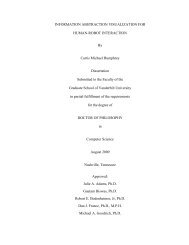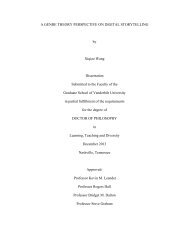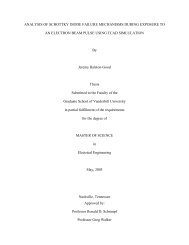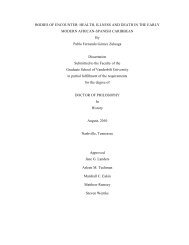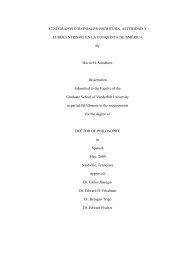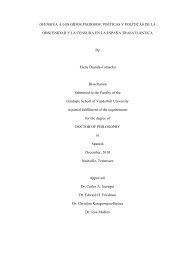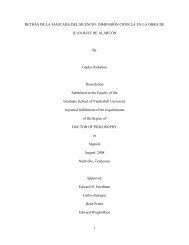EVIDENCE OF ACCRETION-GENERATED X-RAYS IN THE YOUNG ...
EVIDENCE OF ACCRETION-GENERATED X-RAYS IN THE YOUNG ...
EVIDENCE OF ACCRETION-GENERATED X-RAYS IN THE YOUNG ...
Create successful ePaper yourself
Turn your PDF publications into a flip-book with our unique Google optimized e-Paper software.
in the spectra of star-disk systems. Modeling of stellar spectra allows astronomers<br />
to determine many properties of stars. To nail down stellar parameters to within a<br />
high confidence level, the observed spectrum of the star has to match a synthesized<br />
spectrum very well. In the case of an “ordinary” star, the observed spectrum is usually<br />
modeled fairly easily, especially if the star is not extremely faint and if there are no<br />
peculiarities associated with the star’s spectrum. The observed spectrum of a star<br />
surrounded by a circumstellar disk can be dramatically di↵erent, however, especially<br />
when one observes the system at infrared and longer wavelengths. Figure 3 shows<br />
the spectral energy distribution (SED) of the star GM Auriga, a star that is known<br />
to have a circumstellar disk. The SED of a system such as GM Auriga exhibits a<br />
flux contribution from the disk as well as from the star. The shorter wavelength<br />
flux of the SED, primarily those of the optical, are contributed mostly by the star<br />
itself. Longer wavelength data provide evidence of the disk. Instead of observing<br />
the expected decline in flux past the optical wavelength regime, the flux actually<br />
decreases much less due to the circumstellar material, which is radiating at infrared<br />
wavelengths after being warmed by its star or by accretionary growth of the disk<br />
itself. This “infrared excess” is the contribution of the disk to the SED. The bluer<br />
wavelengths, which are contributed by the star, provide the spectral information that<br />
allow one to model the stellar spectrum. This is not always an easy task as the more<br />
heavily-embedded the object is, the redder it appears due to scattering of the bluer<br />
wavelengths by intervening dust. If enough visible light emerges from the star-disk<br />
system, then a stellar spectrum can be derived. With that, then by carefully studying<br />
and modeling the shape of the infrared excess, one can determine many aspects of<br />
9





